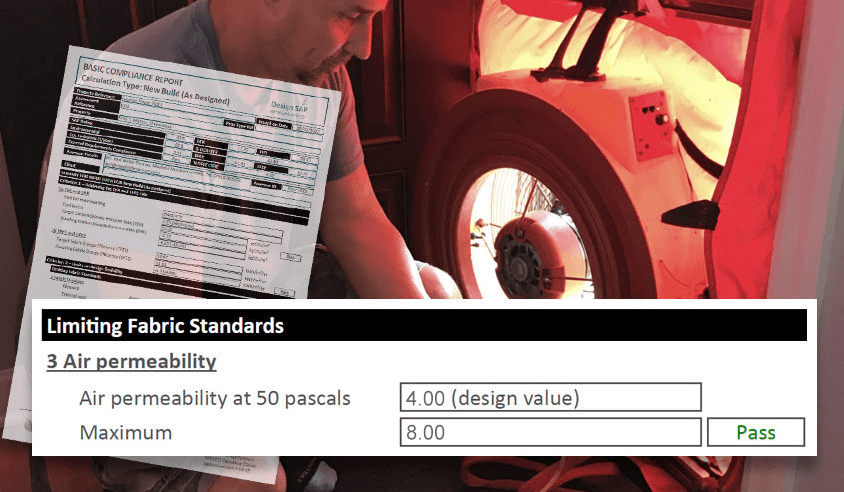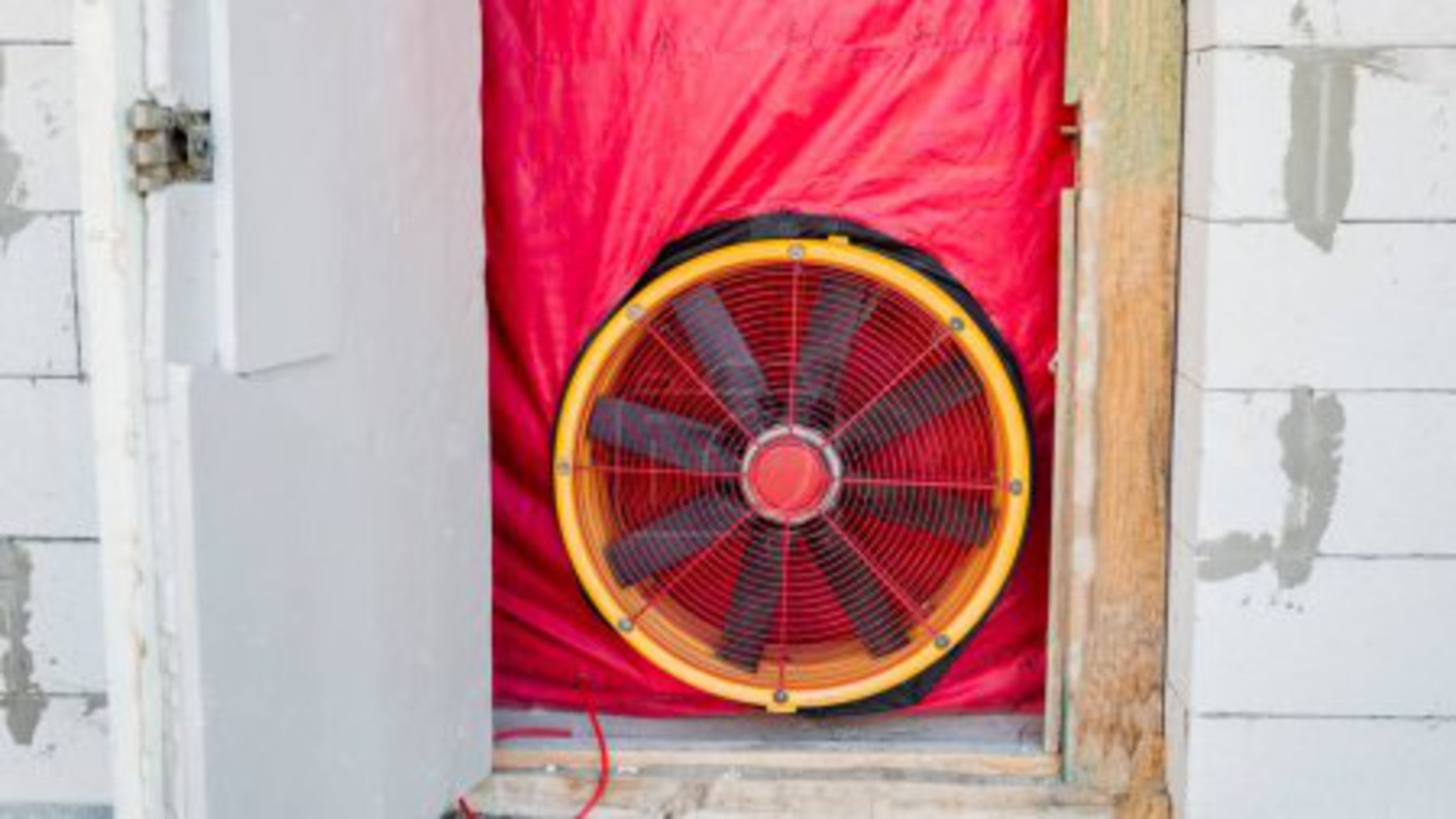Airtightness
Make your home as airtight as possible and reduce your annual heating bill, forever.
How is airtightness measured?
Airtightness is typically measured in two ways:-
- Air permeability – the rate at which air leaks out of the building and is measured as a volume of air lost per hour. Specifically, cubic metres of air per hour per square metre of “building envelope area” (the surface area of the roof, floor and walls) at an internal air pressure of 50 Pascals (50 newtons per square metre, approximately equivalent to a 20MPH wind blowing against the house) – m3/hr/m2 @ 50 Pa
- Air Change Rate – the rate at which the air within a building is replaced and is measured in Air Changes Per Hour (ACPH or ACH) at 50 pascals.
The ratio between these two measures varies slightly dependent upon the design of the house, but generally they are approximately equal to each other.

Current UK Building Regulations for newly built houses stipulate a maximum air permeability of 8m3/hr/m2 @ 50 Pa. A house conforming to the PassivHaus standard (the international construction industry’s most energy efficient building standard), must not exceed 0.6 air changes per hour, approximately equivalent to an air permeability of 0.63 m3/hr/m2.
What do all those numbers mean for me?
A typical new build property of around 200m2 with 2.4m ceiling height (so 480m3) achieving air permeability of 8.00, is currently allowed to lose up to 3,840 cubic metres of warmed air every hour.
By comparison, for a Passivhaus, where the air permeability is 0.63, the permitted maximium air loss is around 288 cubic metres of air per hour to be certified.
Find out more about a Passive House here.
The air lost through the fabric of the building is air that your heating system has already warmed up and the cool air that replaces it must then also be heated to room temperature. Reducing the amount of cold air that your heating system needs to heat while still maintaining a comfortable room temperature to live in, will dramatically reduce your heating costs.
By paying more attention to detail during the build and achieving an air permeability rating of 4.0 m3/hr/m2 instead of 8.0 m3/hr/m2, will save nearly a third of your heating costs every year, forever

